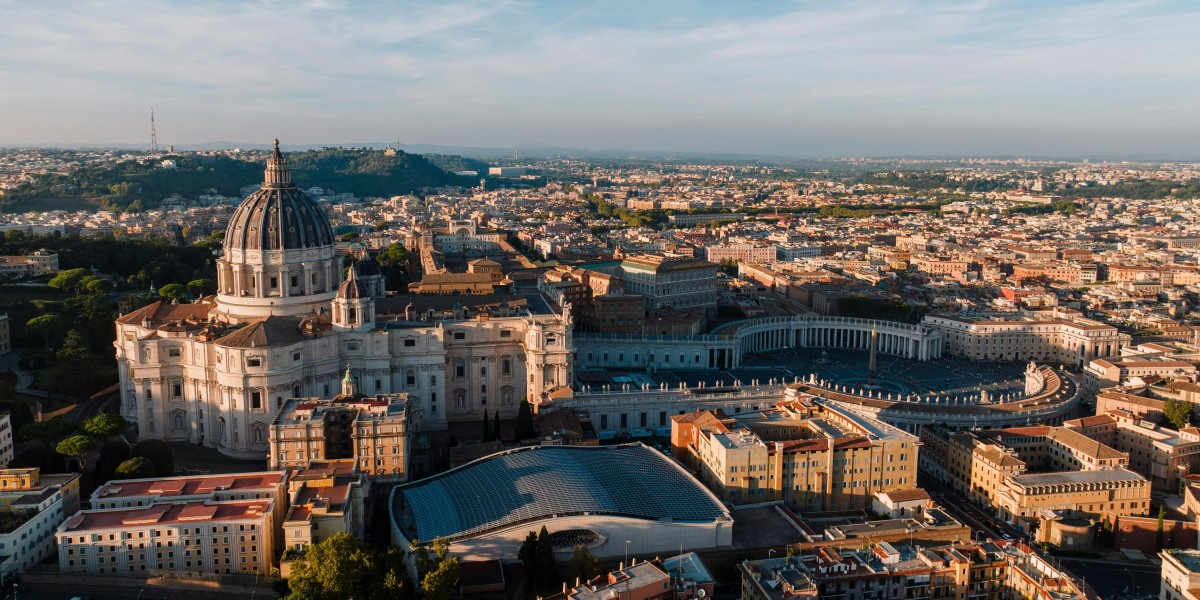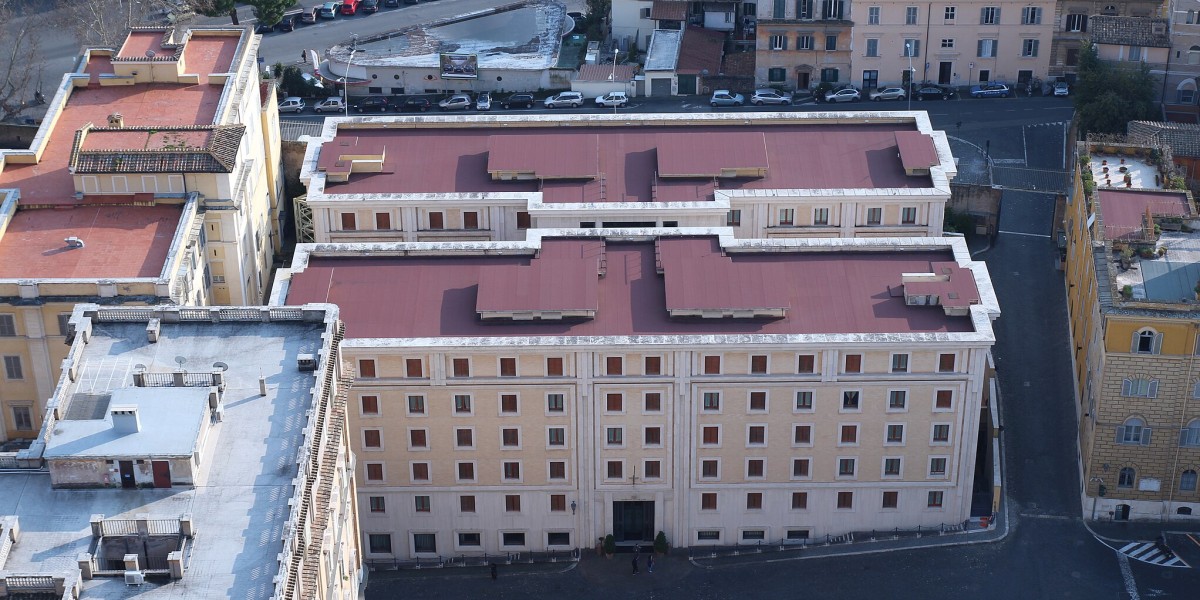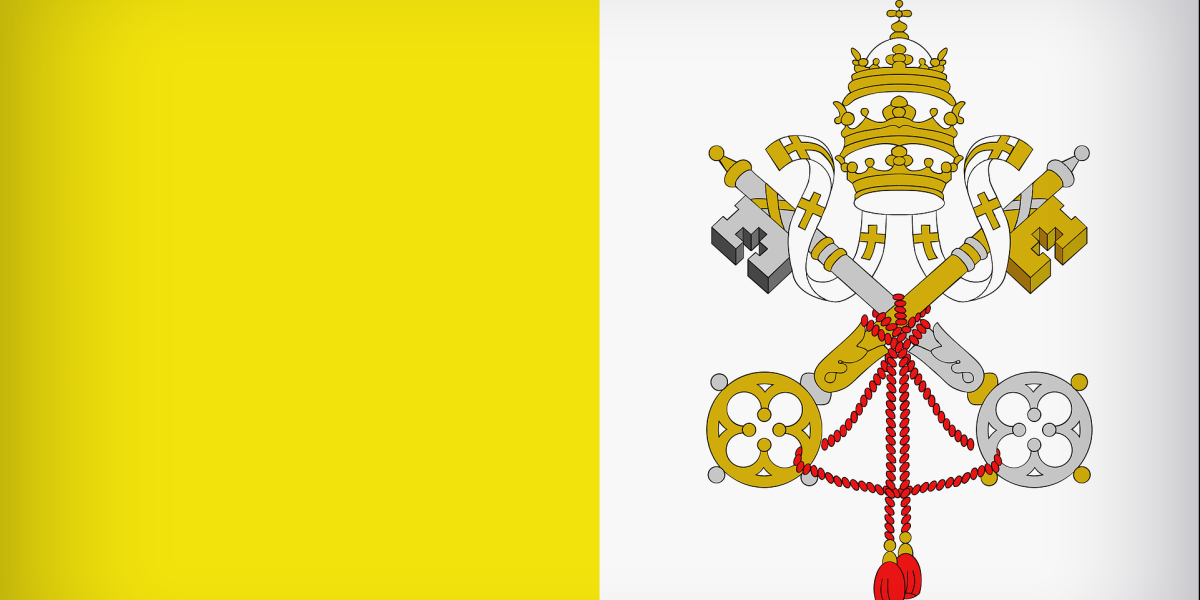
Among the many historic buildings and magnificent residences in Vatican City, not everyone knows exactly where Pope Leo XIV resides. The home of the Pope in Rome is the place the Holy Father chose upon his election on 8th May 2025. Pope Leo XIV, born Robert Francis Prevost, is the first American pope in the 2,000-year history of the Catholic Church
While his predecessor, Pope Francis, chose to live in the Domus Sanctae Marthae—a simple residence close to the community—Pope Leo XIV has chosen to reside in the Apostolic Palace, the traditional papal residence. Pope Leo XIV's choice reflects a return to traditional papal customs, aligning with his role as the 267th Bishop of Rome.
Let's take a closer look at all of the papal residences in the Vatican.
Where is the Pope’s residence located?
The Apostolic Palace, also known as the Papal Palace or the Vatican Palace, is situated within Vatican City, adjacent to St Peter’s Basilica and overlooking St Peter’s Square. It serves as the official residence of the Pope and the administrative centre of the Holy See.
This historic complex includes the papal apartments, the Vatican Museums, the Vatican Library, and several private and public chapels, including the famous Sistine Chapel. For centuries, the Apostolic Palace has been the symbolic and spiritual heart of the Catholic Church, housing Popes, receiving heads of state, and hosting major liturgical celebrations.
The residences of the Popes throughout history
Over the centuries, the Popes have lived in various residences beyond the Apostolic Palace, each with its own history and significance. These residences not only reflect different historical periods but also the evolving needs and wishes of the pontiffs.
Casa Santa Marta
Situated within Vatican City, Casa Santa Marta is a modern residence that combines simplicity with functionality. It served as the home of Pope Francis until his death in 2025, offering a communal and approachable environment in contrast to more traditional papal residences.

The Lateran Palace
This palace was the main residence of the Popes until the papal seat moved to Avignon in the 14th century. Today, the Lateran Palace, next to the Basilica of St John Lateran, is the seat of the Bishop of Rome, maintaining a central role in the Catholic Church.
The Quirinal Palace
Used by the Popes until 1870, this palace witnessed numerous historical events. After the unification of Italy, it became the official residence of the King of Italy and later of the President of the Italian Republic. Its history reflects Italy’s political and cultural transition.
The Papal Palace of Viterbo
Just a short distance from Rome, Viterbo deserves mention. This city in northern Lazio was a papal residence in the 13th century, during a time when Rome was wracked by violent factional disputes and intense tensions between the papacy and the Commune. Viterbo, in contrast, offered effective control over the surrounding territory.
Visiting the Vatican
Visiting the Vatican is an unforgettable experience that offers a deep dive into centuries of art, history, and spirituality. From wandering through the vast halls of the Vatican Museums, where masterpieces by Michelangelo, Raphael, and countless other artists are on display, to marvelling at the breathtaking beauty of St Peter’s Basilica and its iconic dome, every corner of the Vatican tells a story. Visitors to the smallest state in the world can also explore the serene Vatican Gardens or attend a papal audience to witness the Pope in person. Whether you are drawn by faith, culture, or history, a trip to the Vatican is a truly enriching journey.

Can you visit where the Pope lives?
As mentioned the Apostolic Palace, also known as the Papal Palace, is currently the official residence of the Pope and the administrative heart of the Vatican. While the Pope’s private living quarters are not open to the public, visitors can still experience much of the palace’s historic and artistic grandeur.
Most of the accessible areas fall within the Vatican Museums mentioned above, which include world-renowned highlights such as the Sistine Chapel and the Raphael Rooms. These museums form a significant part of the Apostolic Palace complex and offer a fascinating glimpse into the art, history, and culture of the Vatican.
Additionally, nearby landmarks like St. Peter’s Basilica are open to visitors, providing further insight into the spiritual and architectural heritage of the Vatican.
In short, while you cannot tour the Pope’s private apartments, a visit to the Vatican Museums allows you to explore some of the most remarkable sections of the Apostolic Palace and immerse yourself in its rich legacy.
Does anyone other than the pope live in Vatican City?
While the Pope is the most prominent resident of Vatican City, he is not the only one living within the world’s smallest independent state. Vatican City is home to a small community that includes members of the clergy, Swiss Guards, and lay workers who serve various religious, administrative, and security roles.
The Swiss Guards, famous for their colourful Renaissance-style uniforms, live in barracks within the Vatican and are responsible for the Pope’s personal protection. Additionally, high-ranking cardinals and officials of the Roman Curia often have offices and sometimes reside within Vatican properties.
Religious members such as priests, nuns, and other Vatican employees also live in or near the city-state to support its spiritual and operational functions.
In total, Vatican City has a population of around 800 people, all closely linked to its religious and administrative duties.

Living in Rome
Residing in the capital offers a wealth of advantages connected to opportunities, culture, and a dynamic lifestyle marked by beauty. Living here also means being just a stone’s throw from the Holy See and, for those who seek it, close to the Holy Father himself. This allows residents to experience a spirituality that, in this unique place, can be felt all the more profoundly.
